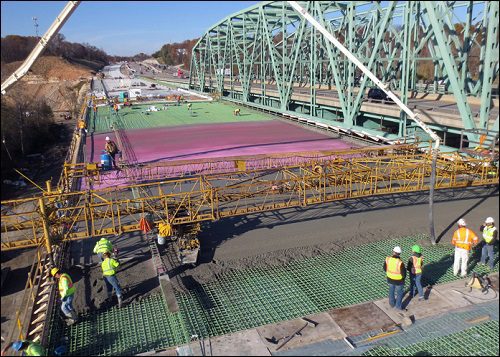A top aide to President Trump told reporters Aug 15 that the administration plans to first pursue a tax reform plan in Congress this autumn, then turn to the long-promised infrastructure investment plan.
Gary Cohn, director of the president’s National Economic Council, said the infrastructure plan would “come on the heels” of a tax overhaul, Politico reported. “We hope it’s this year,” he added.
While the president and others in the administration at times this year said they were close to introducing a project investment proposal for Congress to consider, the administration has so far offered only a few details and Congress has found its agenda clogged after numerous attempts to pass health care legislation.
Cohn’s remarks to reporters, made at New York’s Trump Tower where the president held a press conference after signing an executive order to speed environmental reviews and permitting for planned projects, indicated that the infrastructure plan might be pushed into 2018.
According to Politico, Cohn also said: “We need to get taxes done between now and Thanksgiving. We need to get infrastructure going. As soon [as] tax comes out of the House and goes to the Senate, we’ll put infrastructure in the House.”
During the press conference, Trump was asked why he thinks he can get an infrastructure bill through Congress. “Infrastructure is something that I think we’ll have bipartisan support on,” Trump said. “I actually think Democrats will go along with the infrastructure.”
State departments of transportation, transit agencies and other industry stakeholder groups have hoped over the past year that the new president would push an investment plan to help shrink a large backlog of projects that could increase mobility and improve travel safety for people and freight shipments.
Trump promised during his campaign to deliver $1 trillion of new project investment over 10 years, but in his proposed budget altered that to $200 billion in direct funding over a decade with a goal of using that federal money to leverage an additional $800 billion in local and private funding.
Meanwhile, the president also proposed cutting or eliminating various aspects of federal transportation funding – including the USDOT’s popular TIGER infrastructure grants, new capital grants for major transit projects and Essential Air Service subsidies that help provide commercial air travel to and from rural airports.
Congress has yet to finalize the USDOT budget for the coming year, along with funding for most government agencies, and once lawmakers are back next month from their summer recess they will have only a few weeks to pass a budget before the next fiscal year starts on Oct. 1.
Congress must also complete work on a bill renewing authorization of the Federal Aviation Administration, or pass another temporary extension.
So it is not clear whether or by how much Congress may trim transportation spending for the coming year, and which programs it will maintain or cut, while the timing as well as details of the president’s expected infrastructure investment plan remain uncertain.
If Congress is unable to agree on a fiscal 2018 government funding package by Oct. 1, lawmakers could avoid a shutdown of agency programs by extending current-year funding – as they did in 2016 – until such time as they complete a full-year spending measure.
However, such an outcome would also delay scheduled 2018 funding increases for highway and transit programs under a five-year surface transportation law, preventing state DOTs and transit agencies from using the additional money until Congress completes a budget bill.


